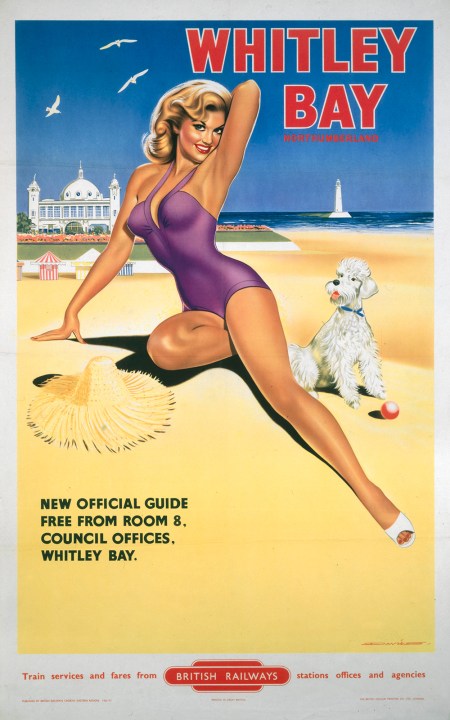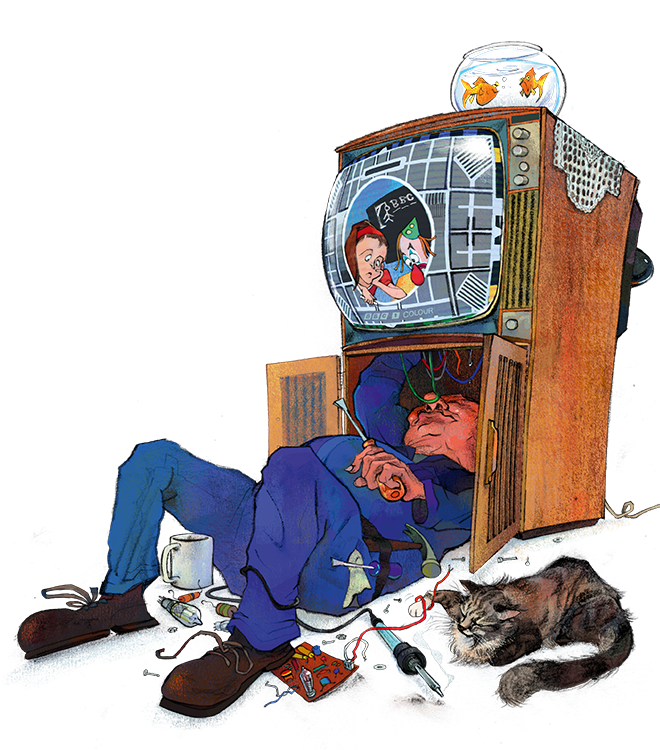
Was it more profitable for an early-20th-century seaside railway poster to promise the undeliverable or to be slightly less enticing but at least tell the truth? In his charming and unashamedly train-spotterish book about how the British travelled to the seaside in the great days of rail, Andrew Martin quotes slogans from posters. The Great North of Scotland Railway described the Moray Firth as ‘the Scottish Riviera’. The Furness Railway named Grange-over-Sands ‘the Naples of the North!’ (The exclamation mark injected a smidgeon of doubt, Martin feels).
More realistic companies toned down their boasts. The LNER decided it should go no further than claim it took passengers to ‘The Drier Side of Britain’. A North Eastern Railway poster proclaimed: ‘Scarborough Braces You Up. The Air Does It.’ ‘Come to Southport for Mild Winters,’ begged the Lancashire and Yorkshire Railway. A poster launching a new line to the Kentish resort of Allhallows-on-Sea, 12 miles from Gravesend, came up with the rather weak boast that the place was ‘Facing Southend’.
Any British pursuit once popular enough had to have a boardgame to go with it. Race to the Ocean Coast, created by Chad Valley Co. for the GWR in the late 1920s, was a game for all the family. Hazards included ‘communication cord pulled’ and ‘line under construction’. It didn’t sell very well and was discontinued in 1932. But the craze for taking trains to the seaside carried on growing, as it had been steadily since the mid-1870s. A bench a quarter of a mile long was installed on the new ‘excursion platform’ at Scarborough station in 1883 to absorb the vast home-going crowds after their day out. To cater for northerners travelling south, there was a regular sleeper service from Glasgow to Brighton.
That Scarborough bench still exists, unlike so much else mentioned in this book, discontinued or demolished and turned into a car park in the aftermath of the brutal and short-sighted Beeching report of 1963, which recommended the closure of 2,363 stations. Every few pages in this book there is mention of 1964 or 1965. Those years were as deadly for British railway stations as 1538 and 1539 were for English monasteries.
On the subject of Scarborough, Martin adds that Edwardian crowds were so huge that the excursion platform wasn’t sufficient and a whole new ‘excursion station’ had to be built, called Scarborough Londesborough Road. Alert to class distinctions, he notes that the Londesborough Road station was very much the ‘tradesman’s entrance’: ‘The premier Scarborough train, the ex-King’s Cross Scarborough Flyer, wouldn’t have been seen dead at Londesborough Road.’
This is a very different book from Madeleine Bunting’s The Seaside: An English Love Affair (2023), which was a work of gritty social journalism. She forced us to face the truth about the sometimes dismal and impoverished back streets of these places.
Martin sticks more cheerfully to the trains, the stations, the arrivals and the departures, in the past and present. To spread joy about what’s left, he travels on lines to the coast that remain open, evoking his journeys in infectiously enthusiastic detail – ‘sand blowing on to Platform 4 at Cleethorpes’. ‘The most interesting sights on the Atlantic Coast Line,’ he writes, ‘include the St Blazey freight yard just beyond Par.’ I must go and have a look. He salutes the Victorian visionaries who got local coastal railway lines going, such as Sir Peter Hesketh-Fleetwood, who in the 1840s developed Fleetwood, Lancashire as a port and resort.
To enhance my enjoyment, I kept referring to Google Maps and the National Rail app to see what Martin meant about, for example, how long it would now take to go by train from Pwllheli to Llandudno (just 50 miles). It would be a six-hour, 40-stop trip, requiring a change at Shrewsbury. His description of his journey from Euston to Pwllhelli, complete with the diesel smell and growl of the Transport for Wales Sprinter, almost made me want to have a go – except that, in the ‘quiet carriage’, a passenger started a phone conversation with: ‘Hi, gang, can you hear me?’
There are some lovely glimpses of the early-20th-century public’s appetite for the seaside – those wonderfully disinhibiting places where, as Martin writes, ‘clocks were floral, golf “crazy”, castles were made of sand and piers offered a walk to nowhere’. In order to avoid cramming too much into their heavy suitcases in the days before wheelie ones, passengers arrived sweltering in layers of overcoats. So great was the demand for the sea that in 1908 the Great Eastern Railway brought barrels of seawater to Liverpool Street. Londoners could order it to be delivered to their doors at 6d for three gallons.
Martin’s wistful, overarching story is that ‘the cars killed the trains, the planes killed the seaside, and Dr Beeching assisted the car cause with unjustified enthusiasm’. But wherever Martin goes, local railway societies seem to be doing all they can to resurrect the closed-down lines. This book makes you long for Dr Beeching’s evil work to be undone.








Comments